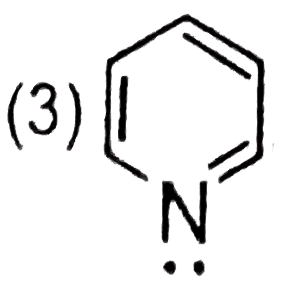Which one requires intermediate host : 1. Dugesia 2. Schistosoma 3. Echinococcus 4. Ancylostoma 5. Wuchereria.
3, 4
3, 5
1, 4
2, 5
The correct Answer is:D
To determine which of the listed organisms requires an intermediate host, we will analyze each option one by one:
1. Dugesia:
- Dugesia, commonly known as planaria, does not require an intermediate host. It is a free-living flatworm and does not pose any danger to humans. Therefore, Dugesia is not the correct answer.
2. Schistosoma:
- Schistosoma is a parasitic worm that does require an intermediate host. The intermediate hosts for Schistosoma are various species of freshwater snails. The life cycle of Schistosoma involves the shedding of eggs from the human host, which then hatch and penetrate the snails. Thus, Schistosoma is a correct answer.
3. Echinococcus:
- Echinococcus is a type of tapeworm that does not require an intermediate host. The transmission occurs primarily through the consumption of contaminated food or water, particularly from fecal matter of infected dogs. Therefore, Echinococcus is not the correct answer.
4. Ancylostoma:
- Ancylostoma, also known as hookworm, does not require an intermediate host. It typically infects humans directly through skin contact with contaminated soil. Thus, Ancylostoma is not the correct answer.
5. Wuchereria:
- Wuchereria, which causes lymphatic filariasis, does require an intermediate host. The transmission of Wuchereria occurs through mosquitoes, which act as the intermediate host. Therefore, Wuchereria is also a correct answer.
In conclusion, the organisms that require an intermediate host from the given options are Schistosoma (2) and Wuchereria (5).
Final Answer:
The organisms that require an intermediate host are Schistosoma (2) and Wuchereria (5).
- Dugesia, commonly known as planaria, does not require an intermediate host. It is a free-living flatworm and does not pose any danger to humans. Therefore, Dugesia is not the correct answer.
- Schistosoma is a parasitic worm that does require an intermediate host. The intermediate hosts for Schistosoma are various species of freshwater snails. The life cycle of Schistosoma involves the shedding of eggs from the human host, which then hatch and penetrate the snails. Thus, Schistosoma is a correct answer.
- Echinococcus is a type of tapeworm that does not require an intermediate host. The transmission occurs primarily through the consumption of contaminated food or water, particularly from fecal matter of infected dogs. Therefore, Echinococcus is not the correct answer.
- Ancylostoma, also known as hookworm, does not require an intermediate host. It typically infects humans directly through skin contact with contaminated soil. Thus, Ancylostoma is not the correct answer.
- Wuchereria, which causes lymphatic filariasis, does require an intermediate host. The transmission of Wuchereria occurs through mosquitoes, which act as the intermediate host. Therefore, Wuchereria is also a correct answer.
The organisms that require an intermediate host are Schistosoma (2) and Wuchereria (5).
Topper's Solved these Questions
Similar Questions
Consider the following intermediates formed during Krebs cycle
1. α-ketoglutarate 2. lsocitrate
3. Succinate 4. Malate
5. Fumerates
The correct sequences in which the above intermediates are formed is -
View SolutionA fungus which requires only one single host for completion of its life cycle is called
View Solution
Knowledge Check
Viruses are non-cellular organisms but relicate themselves one they infect the host cell. To which of the following kingdom do viruses belong to ? 1. monera 2. protista , 3. fungi , 4. none of these
AMoneraBProtistaCFungiDNone of these

Write the number of intermediate which is involved in the given reaction is:
1. For Carbocation
2. For Free radical
3. For Carbanion
4. For Cyclicbrominium ion
View SolutionIn the five- kingdom classification , which kingdom occupies an intermediate position from a phylogenetic point of view ?
1)Monera
2)Fungi
3)Protista
4)None of these
View Solution
When a nucleophile attack to carbonyl group of a carboxylic acid derivative, the carbon-oxygen π- bond breaks. The resulting intermediate is called a tetrahedral intermediate because sp2 carbon in the reactant has become a tetrahedral (sp3) carbon in the intermediate.
Here ..Yɵ is leaving group, the weaker base is expelled preferentially.
Q. Which of the following given compounds don't form amide, when react with CH3COCl.
(1). CH3−NH−CH3
(2). CH3−N∣CH3−CH2H5
(3).
(4). CH3−CH2−CH2−NH2
View SolutionAn individual bathing in an infected pool or coming in contact with contaminated water is liable to be infected with____. The ____larva stick to the surface of the skin of swimmer or bather, and penetrate the skin.
1) Ancylostoma, I I n d juvenile
2) Bilharzia, Cercaria
3) Schistosoma, metacercariae
4)Bilharzia, redia
View SolutionWhich one of the following life cycle stage of liver Fluke is infective to the intermediate host
View SolutionWhich one of the points (1,1),(−1,2)and(2,3) lies on the side of the line 4x+3y−5=0 on which the origin lies?
View SolutionMatch the pairs of diseases and pathogens:
Column-IColumn-II1. Malariaa. Wuchereria bancrofti2. Filariasisb. Helminth3. Typhoidc. Plasmodium falciparum4. Schistosomiasisd. Salmonella typhi
View Solution
